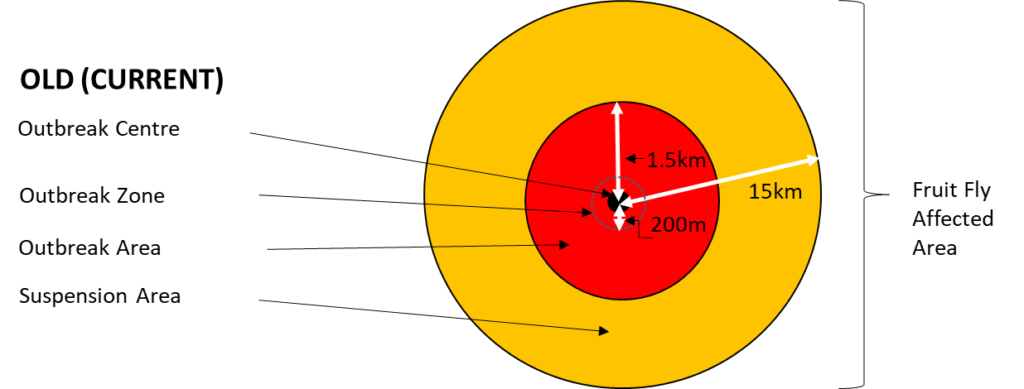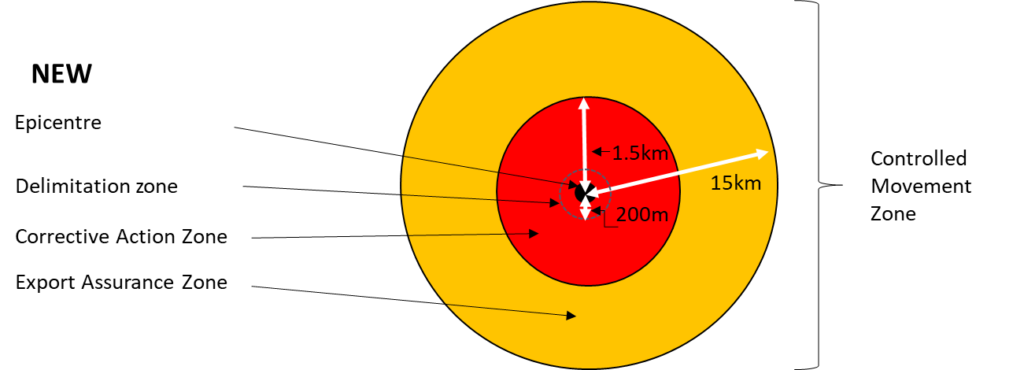PIRSA advises of new terminology relating to how outbreak areas are described, following an update to Australia’s National Fruit Fly Management Protocol (ANFFMP), which replaces the Code of Practice for management of Queensland fruit fly previously used.
The ANFFMP (Protocol) provides contemporary requirements applied by all Australian states and territories for the management of fruit flies. Adopting and following the protocol provides confidence to both domestic and international markets that South Australia is monitoring and responding to fruit fly detections appropriately.
Given South Australia is in fruit fly eradication mode, there is likely to be a slow phase-in period of this new terminology on public-facing materials, in order to avoid confusion.
Refer to the table and images below to explain the ‘old (current)’ and ‘new’ terminology.
| NEW: Australia’s National Fruit Fly Management Protocols (ANFFMP) | OLD (CURRENT): Code of Practice | Definition |
| Discovery point |
| |
| Outbreak trigger |
| |
| Epicentre | Outbreak Centre |
|
| Delimitation Zone | Outbreak Zone (200m red centre) |
|
| Corrective Action Zone | Outbreak Area |
|
| Export Assurance Zone | Suspension Area |
|
| Controlled Movement Zone | Fruit Fly Affected Area (FFAA) |
|
| Fruit Fly Pest Free Area (FF-PFA) | Pest Free Area (PFA) |
|


Note: Images represent Queensland fruit fly situation only and are not drawn to scale
If you find that a quarantine area boundary bisects your land parcel, you must treat your whole land parcel as if it is inside the ‘higher quarantine’ area, for example, Corrective action Zone (Outbreak Area) over Export Assurance Zone (Suspension Area), Export Assurance Zone (Suspension Area) over outside the Controlled Movement Zone (Fruit Fly Affected Area). This is irrespective of where your vine rows or winery buildings are located within the land parcel.